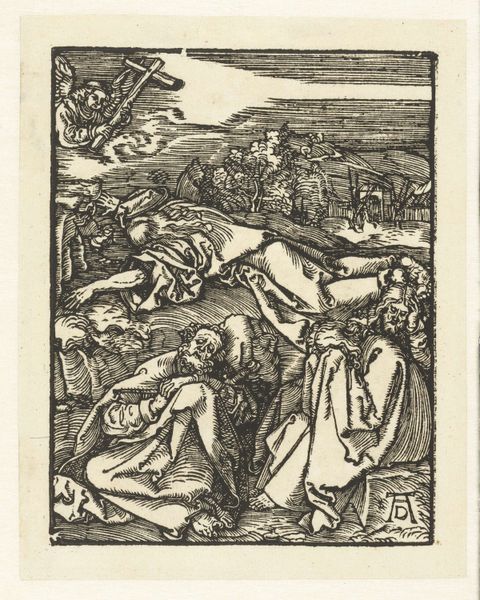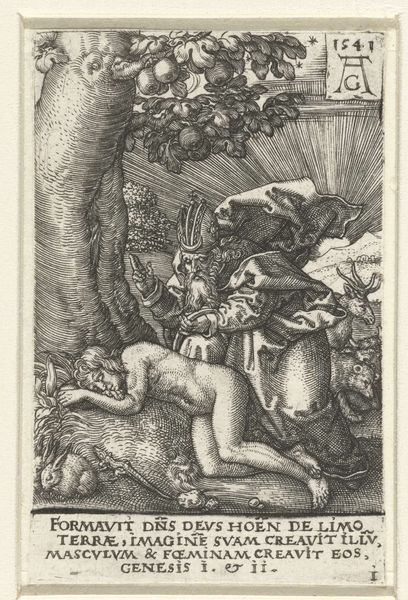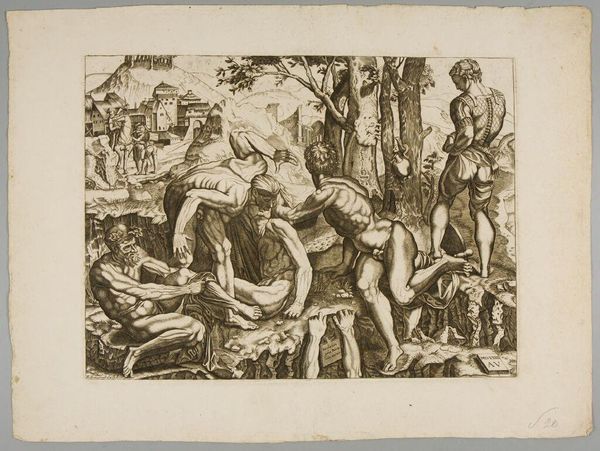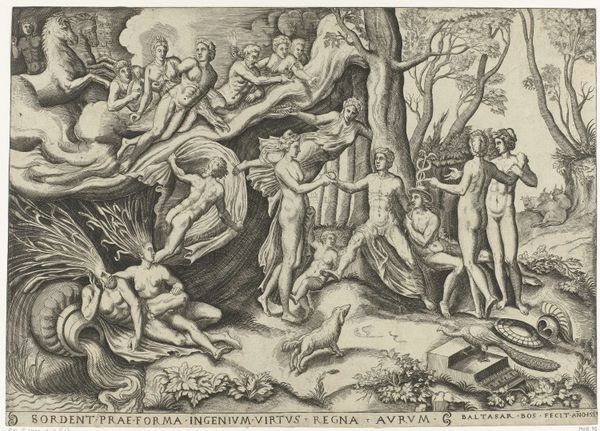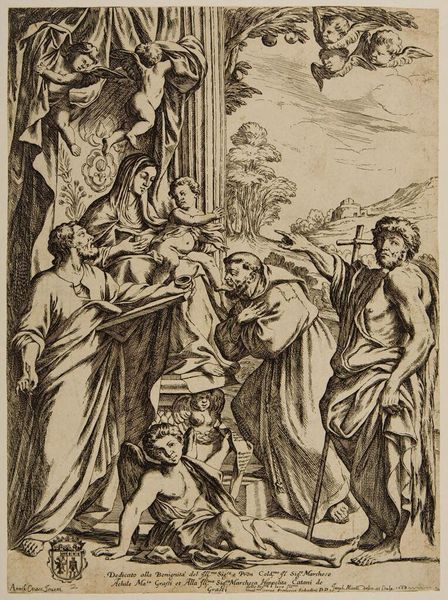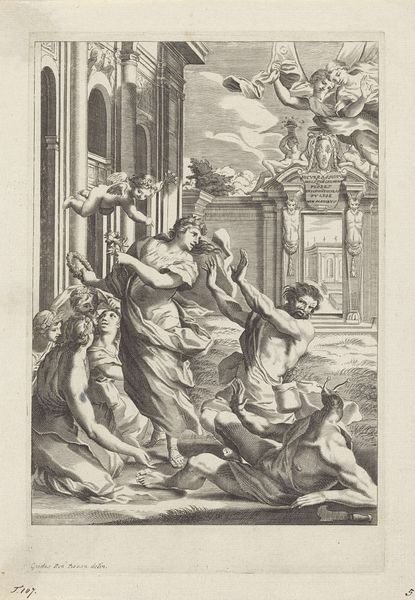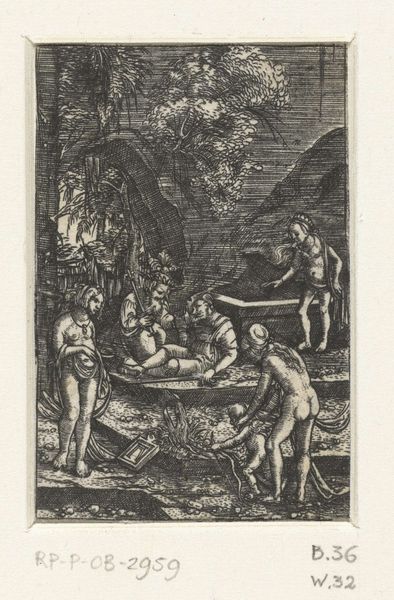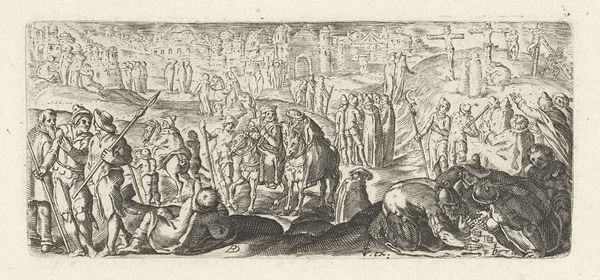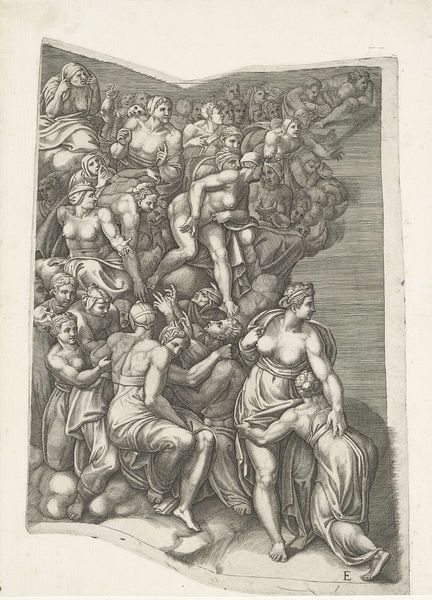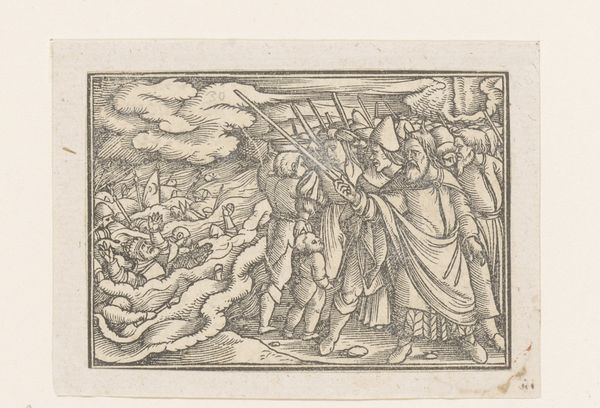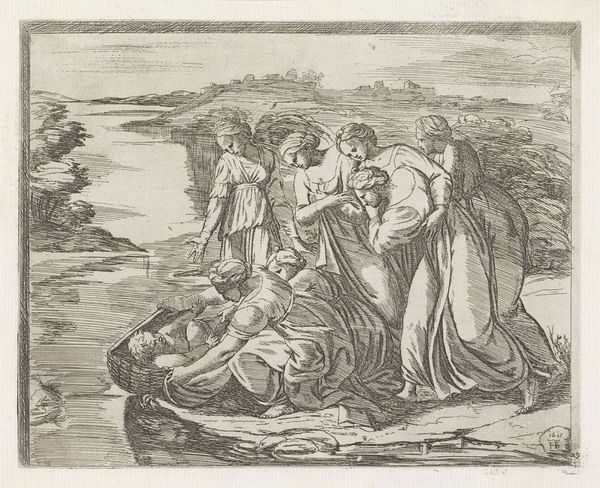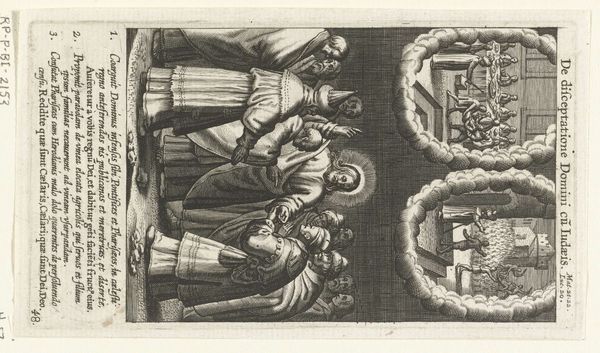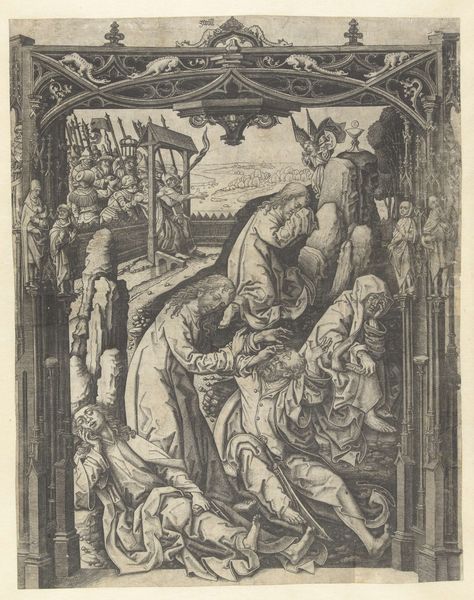
print, engraving
#
baroque
# print
#
old engraving style
#
figuration
#
line
#
history-painting
#
engraving
Dimensions: height mm, width mm
Copyright: Rijks Museum: Open Domain
This is Boëtius Adamsz. Bolswert's engraving, depicting Christ and the Mother of the Sons of Zebedee. Observe the figures around Christ, their postures embodying humility and supplication, while above, an image of violence and the Passion is portended. The halo that illuminates Christ’s head signifies divine grace, a symbol echoed across centuries, from Byzantine mosaics to Renaissance paintings, yet always hinting at the divine made mortal. Note also the downcast eyes and clasped hands—gestures of prayer found in countless religious artworks, each reiterating humanity's plea for divine favor. Consider the emotional weight of these symbols. The artist uses these codified gestures to tap into a collective memory, an inherited understanding of piety and suffering. We recognize these motifs, not merely as artistic conventions, but as echoes of shared human experiences, stirring within us a sense of empathy and awe. This cyclical progression and return in different contexts, evolves and takes on new meanings in new eras.
Comments
No comments
Be the first to comment and join the conversation on the ultimate creative platform.
